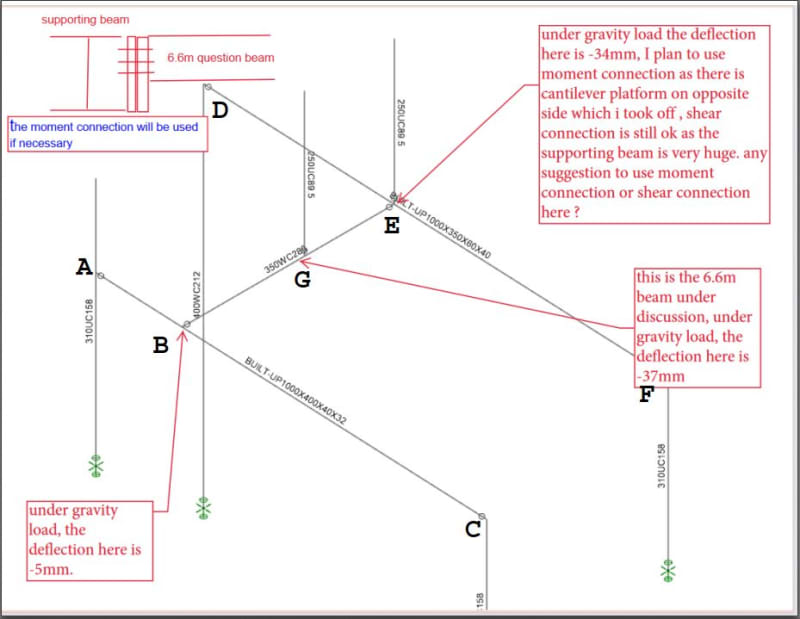TTTKAO
Mining
- Aug 24, 2022
- 78
Hello All,
I am designing a 6.6m steel beam with 20mm displacement difference at the ends. this beam is supported by beams, one end is moment connection and the other end is shear connection. Is there anybody have suggestion regarding to how to consider the load resulting in the beam end relative displacement or know any document discussing about this topic?
Currently, i doubled the beam length to 13.2m and add 20mm displacement at the center of the beam to get the additional load, is there any risk or concern to use this method?
Thank you for your advice and time in advance.
Regards!
I am designing a 6.6m steel beam with 20mm displacement difference at the ends. this beam is supported by beams, one end is moment connection and the other end is shear connection. Is there anybody have suggestion regarding to how to consider the load resulting in the beam end relative displacement or know any document discussing about this topic?
Currently, i doubled the beam length to 13.2m and add 20mm displacement at the center of the beam to get the additional load, is there any risk or concern to use this method?
Thank you for your advice and time in advance.
Regards!

